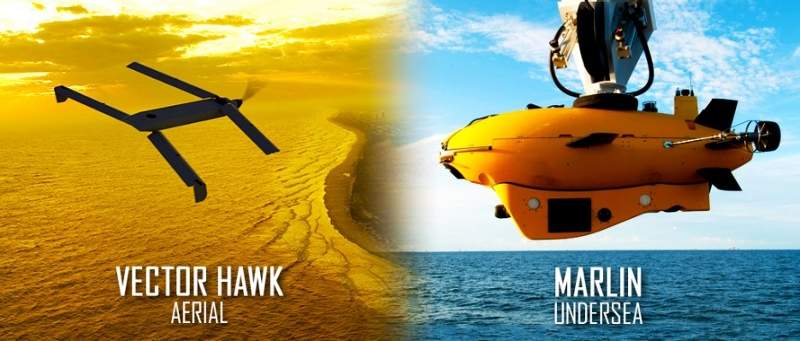Vector Hawk small unmanned aircraft system (sUAS) was successfully launched by a Marlin MK2 autonomous underwater vehicle (AUV) for the first time in September, 2016.
The sUAS is being developed by Lockheed Martin, an aerospace, defence and security company based in Maryland, US, for use by the US Armed Forces. It is intended for a wide range of tactical missions including intelligence, surveillance and reconnaissance (ISR) and situational awareness.
Vector Hawk unmanned aerial system development
The Vector Hawk sUAS was unveiled during the AUVSI (Association for Unmanned Vehicle Systems International) conference held in Orlando, Florida, in May 2014.
Lockheed Martin received a contract valued at $4.6 million from the US Combating Terrorism Technical Support Office in November 2015 to continue to develop a canister-launched small unmanned aircraft system for maritime operation.
The aerial vehicle’s launch from Marlin AUV was conducted from Narragansett Bay during a cross-domain command and control exercise held by the US Navy. During the demonstration, the Vector Hawk transmitted imagery and signals intelligence to Submaran unmanned surface vehicle, which was then relayed the data to the ground control station.
Vector Hawk unmanned aerial vehicle design and features
The Vector Hawk small unmanned aircraft features a flexible design and easily folds into a man-packable unit. It is water-proof, reconfigurable and reusable.
The sUAS can operate in three modes of either fixed and folding wing, quadcopter or tilt-rotor with vertical take-off and landing (VTOL). In fixed and folding wing configuration, the UAV can be launched either by hand or using a canister, whereas the quadcopter and tilt-rotor with VTOL variants can be launched from land or sea-based platforms.
The fixed-wing variant is fitted with a pair of main wings, with one located forward and the other in the rear section. The tilt-rotor version features six tilting rotors, each having two rotor blades.
The UAV has the ability to transition from tilt-rotor VTOL mode to fixed-wing flight mode while in the air.
Payloads carried by Vector Hawk sUAS
With a gross take-off weight of approximately 1.8kg, the unmanned aircraft can carry payloads weighing roughly 340g.
The drone’s open architecture design allows for rapid integration of mission-specific payloads such as electro-optical / infrared (EO / IR) cameras, laser illuminator and ISR systems.
Operation and control
The UAV is capable of operating autonomously from take-off to landing. A failsafe system on board the drone enables it to safely return to the launch point in the event of loss of communication with its ground control station.
The data transfer between the UAV and its control is provided by an adaptable data link, which can operate in a variety of waveforms.
The communication link uses mesh networking to relay data through 3G, 4G and LTE cellular networks. Additionally, it has a high bandwidth software-defined radio and over-the-air reconfiguration capabilities.
Vector Hawk sUAS performance
Powered by battery, the Vector Hawk uses a two-blade propeller mounted in the nose. It has the ability to endure for more than 70 minutes and can operate at line of sight ranges of up to 15km. It can fly in difficult weather conditions and withstand wind speeds up to 80km/h.
In fixed-wing configuration, the aerial vehicle can fly at a speed of 130km/h, while the VTOL-configured sUAS can fly at a speed of 90km/h.
The micro-drone can be retrieved and re-launched within a few minutes.










